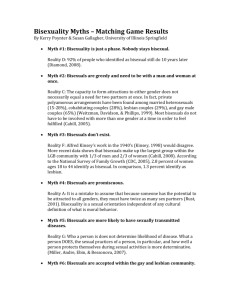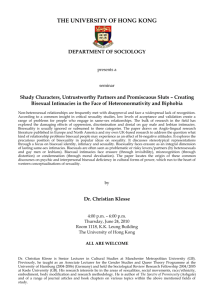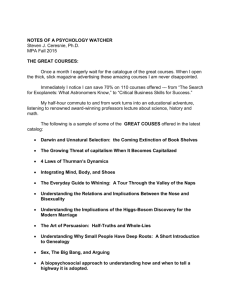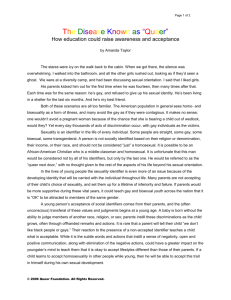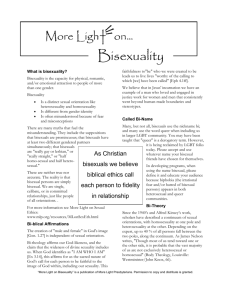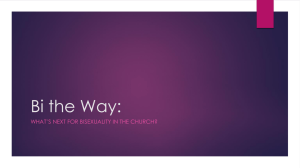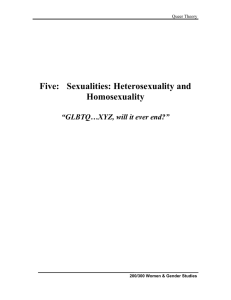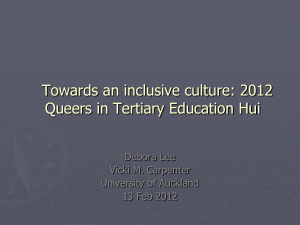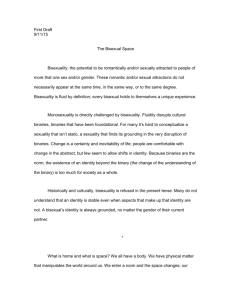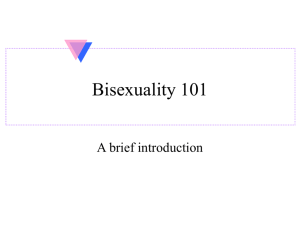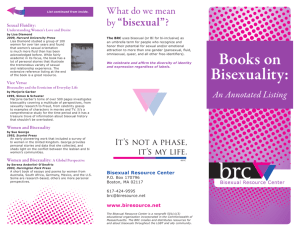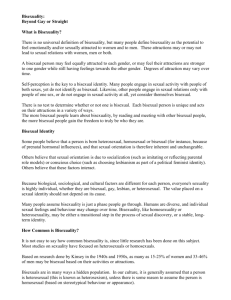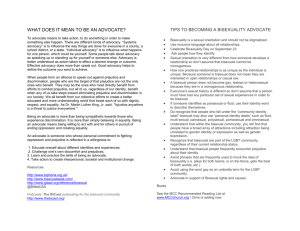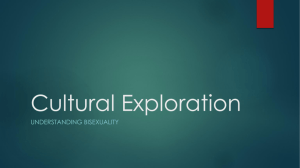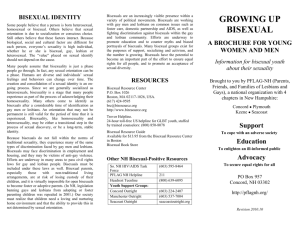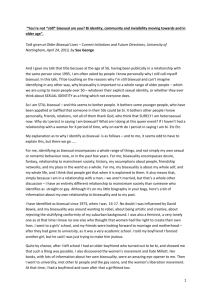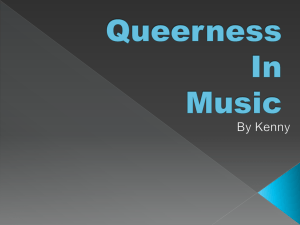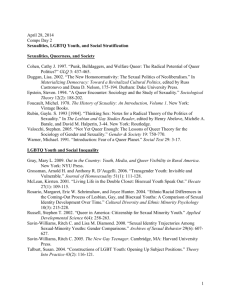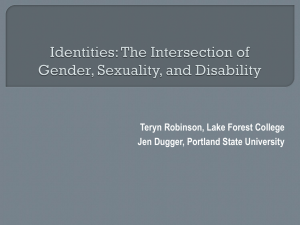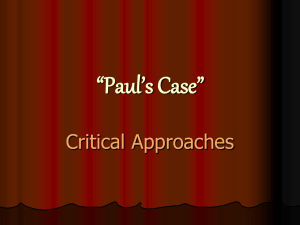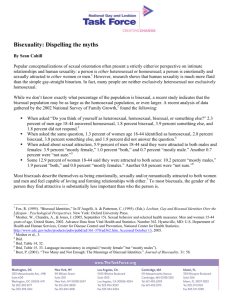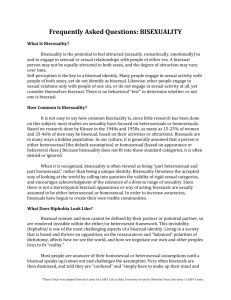Excerpts from Stacey Young`s “Dichotomies and Displacement
advertisement
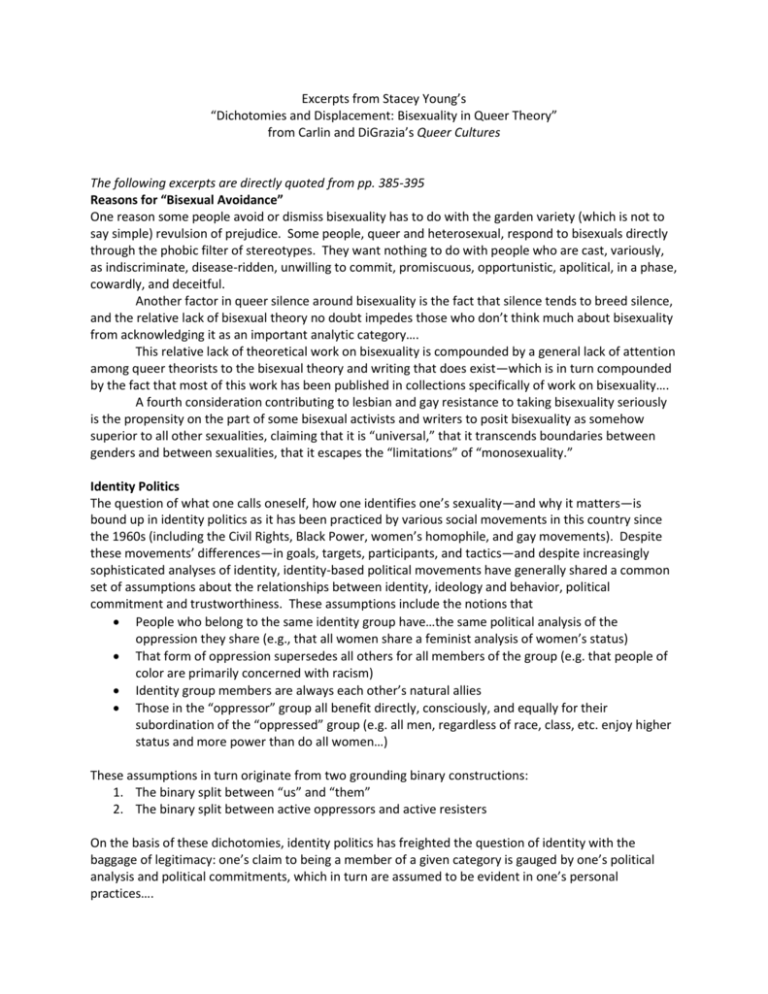
Excerpts from Stacey Young’s “Dichotomies and Displacement: Bisexuality in Queer Theory” from Carlin and DiGrazia’s Queer Cultures The following excerpts are directly quoted from pp. 385-395 Reasons for “Bisexual Avoidance” One reason some people avoid or dismiss bisexuality has to do with the garden variety (which is not to say simple) revulsion of prejudice. Some people, queer and heterosexual, respond to bisexuals directly through the phobic filter of stereotypes. They want nothing to do with people who are cast, variously, as indiscriminate, disease-ridden, unwilling to commit, promiscuous, opportunistic, apolitical, in a phase, cowardly, and deceitful. Another factor in queer silence around bisexuality is the fact that silence tends to breed silence, and the relative lack of bisexual theory no doubt impedes those who don’t think much about bisexuality from acknowledging it as an important analytic category…. This relative lack of theoretical work on bisexuality is compounded by a general lack of attention among queer theorists to the bisexual theory and writing that does exist—which is in turn compounded by the fact that most of this work has been published in collections specifically of work on bisexuality…. A fourth consideration contributing to lesbian and gay resistance to taking bisexuality seriously is the propensity on the part of some bisexual activists and writers to posit bisexuality as somehow superior to all other sexualities, claiming that it is “universal,” that it transcends boundaries between genders and between sexualities, that it escapes the “limitations” of “monosexuality.” Identity Politics The question of what one calls oneself, how one identifies one’s sexuality—and why it matters—is bound up in identity politics as it has been practiced by various social movements in this country since the 1960s (including the Civil Rights, Black Power, women’s homophile, and gay movements). Despite these movements’ differences—in goals, targets, participants, and tactics—and despite increasingly sophisticated analyses of identity, identity-based political movements have generally shared a common set of assumptions about the relationships between identity, ideology and behavior, political commitment and trustworthiness. These assumptions include the notions that People who belong to the same identity group have…the same political analysis of the oppression they share (e.g., that all women share a feminist analysis of women’s status) That form of oppression supersedes all others for all members of the group (e.g. that people of color are primarily concerned with racism) Identity group members are always each other’s natural allies Those in the “oppressor” group all benefit directly, consciously, and equally for their subordination of the “oppressed” group (e.g. all men, regardless of race, class, etc. enjoy higher status and more power than do all women…) These assumptions in turn originate from two grounding binary constructions: 1. The binary split between “us” and “them” 2. The binary split between active oppressors and active resisters On the basis of these dichotomies, identity politics has freighted the question of identity with the baggage of legitimacy: one’s claim to being a member of a given category is gauged by one’s political analysis and political commitments, which in turn are assumed to be evident in one’s personal practices…. These notions are difficult to uproot not because they are “true” or compelling on a rational level…they are difficult to uproot because they binary structures of thought they represent are so ingrained, and are constantly reinforced. … Challenges to identity politics-based assumptions of homogeneity among those represented by a given identity category have resulted in the proliferation of terms of difference….Thus we get terms like “white, heterosexual, middle-class women,” “Jewish lesbian,” and “working-class gay men of color.”…It is at this point that many people balk, sometimes because they recognize, when faced with the task of making language more accurately reflect the diversity of social reality, that that diversity is impossible to capture fully in language…. … Critics of identity categories argue persuasively that these categories, far from signifying discrete and coherent groupings of individuals, in fact function as representational fictions that do violence to differences between people, as well as to individuals’ own internal complexities, in order to secure an appearance of coherence among all those who “belong” to a given category. … This [stable] view of sexual object choice among members of identity categories—the view of a stable center with flux relegated to the margins—obscures the degree to which uncertainty and variability may be closer to a rule than an exception. Marylynne’s summary of Young’s suggestions: Young goes on to suggest that both theory and activism should strive to do three things: 1. Critique the view of bisexuality as a combination of heterosexuality and homosexuality in which bisexuals have a gay side and a straight side. 2. Critique the Kinsey scale and others that insist on seeing sexual identity in terms of gender. 3. Critique gay rights language that employs the same stereotypes of bisexuals that had been used against gay and lesbian people.
